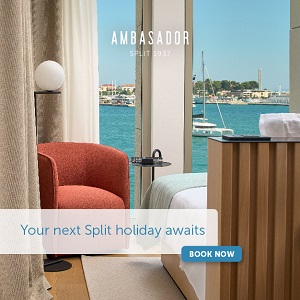Domestic Flights in Croatia to Resume from May 11
April 24, 2020 - Croatian Prime Minister Andrej Plenkovic announced at Thursday’s government session that domestic air traffic in Croatia would soon resume as part of the loosened measures in place because of the coronavirus pandemic.
Namely, Avio Radar reports that Andrej Plenkovic announced that domestic flights in Croatia would resume from May 11, 2020.
Croatian national carrier Croatia Airlines has been allegedly preparing to reinstate flights for some time, and there are several scenarios in the pipeline. However, the decision on which scenario to implement and which flights to introduce depends on several factors, including the prescribed measures of the National Civil Protection Headquarters, Croatia, the European Civil Aviation Agency, and with the agreement of airports.
By this date, not all flights (destinations and frequency) in operation prior to the COVID-19 pandemic will return.
Ex Yu Aviation reports that the General Manager of Brač Airport, Tonči Peović, said that flights from Zagreb to Split and Dubrovnik would be resumed first, and other domestic destinations later on.
Recall, Croatia Airlines stopped domestic services in March, and while almost all of Croatia’s airports are still open, only Zagreb Airport is running commercial flights (i.e., the Croatia Airlines service to Frankfurt).
Dubrovnik Airport is the only airport closed in Croatia and has been closed since March 19 after staff members tested positive for the coronavirus. The airport plans to reopen on May 2.
A look at the new measures below:
PHASE 1 - April 27, 2020
- Ability to work for all business entities engaged in trade, except those operating within shopping centers
- Continuation of work to all business entities engaged in service activities, except those in which close contact with customers is observed, respecting physical distance measures (for example, carpenter, tailor, locksmith, travel agencies, photo studio)
- Introduction of public city and suburban transport lines and express lines for islands not connected by ferry
- Libraries, museums, galleries, antiques and bookstores to open
- Facilitating training of athletes I and II. categories in individual sports and senior sports teams competing in the highest level of competition
- Facilitating the state professional exam for priority groups of students
PHASE 2 - May 4, 2020
- Enabling the full operation of the public health system, with the exception of exceptions in line with the Ministry of Health measures
- Enabling the full operation of the private health system, with due regard for specific epidemiological measures
- Ability to work for all business entities engaged in service activities in which close contact with clients is observed, with respect to specific epidemiological measures (for example, hairdressers, beauticians, barbers, pedicurists)
PHASE 3 - May 11, 2020
- Gatherings of up to 10 people in one place allowed, while respecting physical distance measures
- Facilitating the operation of shopping malls while respecting specific epidemiological measures
- Facilitating the work of preschools and elementary classes from grades 1-4 and special classes and working with children with disabilities who have a teaching assistant
- Laboratory, artistic and clinical exercises and practical work allowed in small groups in higher education
- Introduction of inter-county and domestic air services
- Allowing catering facilities to work exclusively in outdoor areas and terraces
- Allowing catering facilities to work in accommodation facilities only for users of accommodation services
- Operation of national and nature parks allowed
- Expanding opportunities for issuing e-passes
To read more about travel in Croatia, follow TCN’s dedicated page.
Reflections on the Zagreb Earthquakes, 1 Month Later
April 24, 2020 - A month after the Zagreb earthquakes of March 22, reflections of a Zagreb resident living with the new reality.
It's been more than a month since the terrible Zagreb earthquake that woke up the city early in the morning of the 22nd March. A month seems like a long time in a crisis, which is why you might think a lot has changed since and things started getting back to normal again. It’s true, some things changed. With dozens of smaller aftershocks, residents of Zagreb became true experts in guessing the exact magnitude of earthquakes. We crashed the Last Quake servers a few times, searching for its aftershocks reports. Just the other day, I thought it was nice to get to the point when I received more notifications from Rain Alert, on a sunny day, than from Last Quake. And then, on the 23rd of April, there was that rumbling sound again and a strong kick. This could be between 3 and 3.5, I thought. And it was true, everybody in the city guessed with ease - a 3.2 earthquake brought back the stress and all of the disturbing thoughts: shouldn’t this be over by now? Remember that year when a stronger one hit 15 days after a pretty big one? Is this still an aftershock… or god forbid a foreshock? I don’t think we’re never going back to normal!
I started off on a lighter note, but there’s nothing light about how we feel here in Zagreb. We might have gained new seismographic superskills since the 5.5. earthquake. Other than that, nothing has really changed. The city and its residents still haven’t received much help.
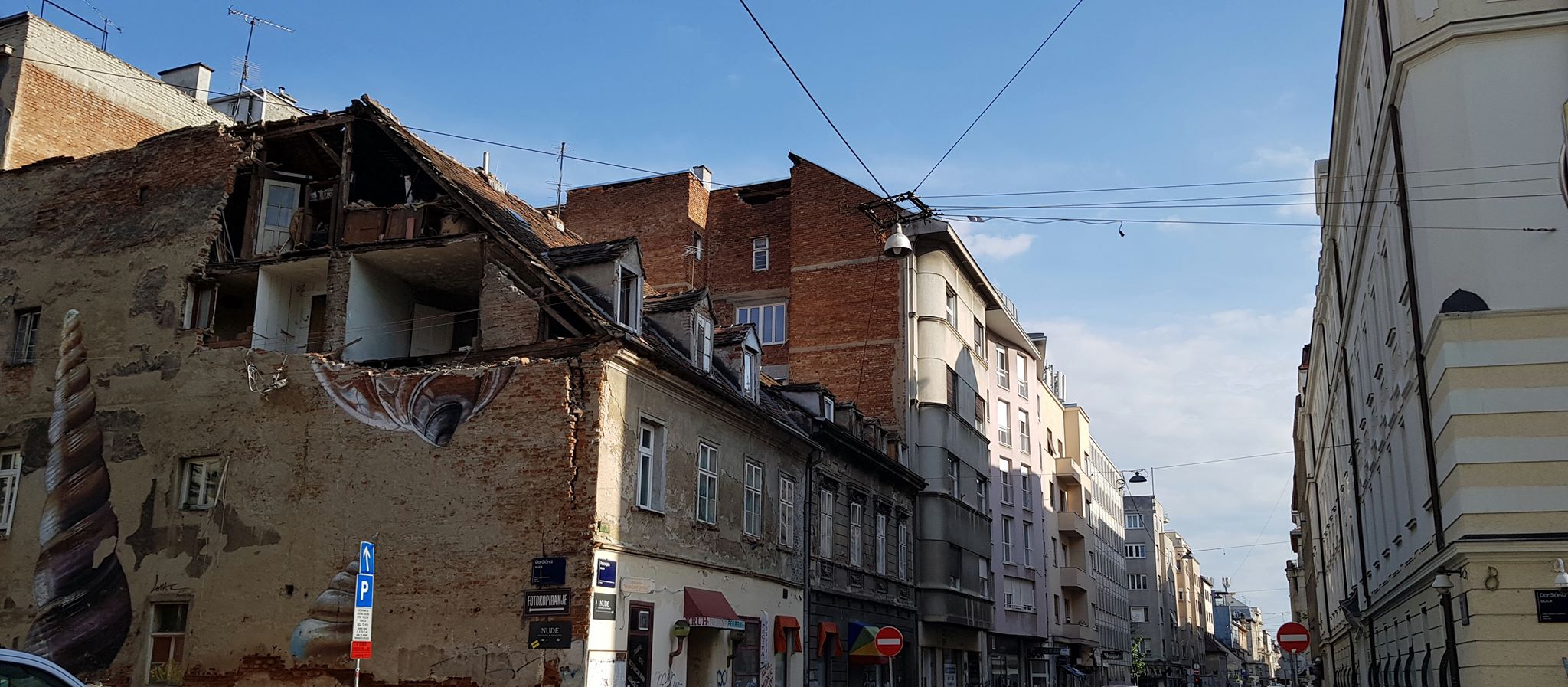
A few days ago, Zagreb lost the top of the second cathedral spire. The southern one had already fallen during the earthquake. The northern one needed to go because of structural damage. This hurt us again. I’m perfectly aware the spire was dangerous and unsafe. However, I can’t fight the feeling - the moment they took it off, I felt a strange disappointment and I thought how they conveniently erased the damage. They flattened the scar and now you can’t even spot the wound. This will definitively help us forget faster.
People wonder what will happen with the cathedral, when do they plan to renovate it? Great question. It was painful for me as well to watch the top of the second spire being demolished. I’m not sure if I will ever forget the painful feeling of disbelief when I saw the first spire damaged in the earthquake from up close. However, now, a month since the earthquake, with dozens of unsafe schools and student residences, it seems to me there are even better questions out there. Such as, what’s the plan if Croatian students go back to their classrooms before the summer? The real question is, what would happen if Zagreb was struck by this exact same earthquake, without coronavirus lockdown to cover its true damage? Is there some kind of a plan for cases like these in our town, or in other Croatian regions that face the same danger? Without the coronavirus, our daily lives were supposed to continue by now. This is simply not possible for many. Thanks to social distancing, we can’t easily spot other people’s suffering and we simply can’t comprehend the real damage.
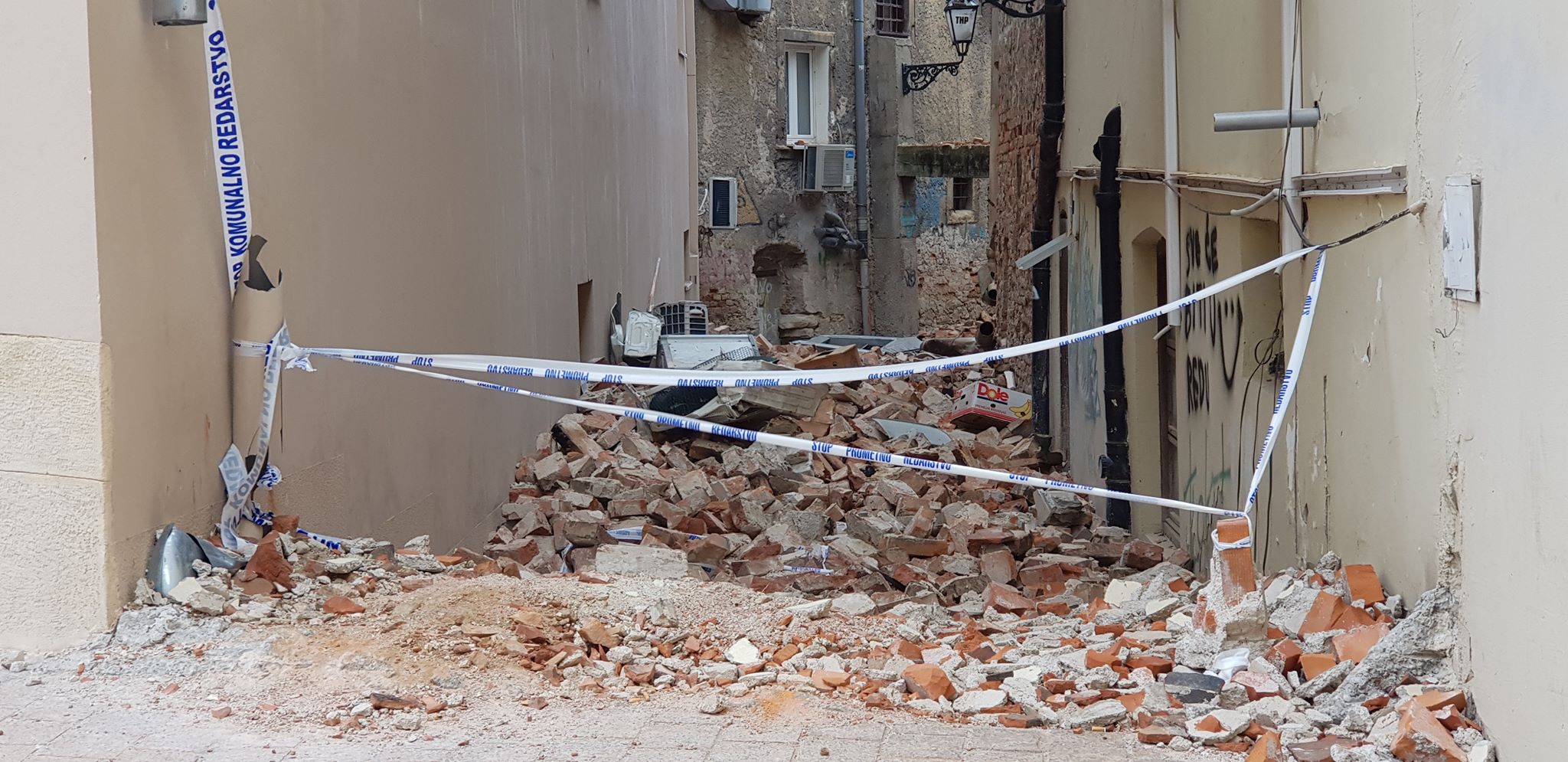
In the beginning, there was a lot of talk about just how lucky we are the earthquake happened early in the morning, in the midst of lock-down… The moments of the earthquake are behind us. Today, I dare to think that, what seemed to be a lucky circumstance, turned out to be the worst of luck – for the very city. The incapability of the authorities still isn’t completely exposed. At the same time, the possibilities for corruption and mishandling the consequences are infinite. I wonder who’s the lucky one?
The magnitude of the earthquake was precisely enough to throw hundreds out of their homes, to cause a terrible condition for many buildings, while at the same time, Zagreb is still pretty on the outside. You could walk around certain streets and barely notice that anything happened if you didn’t know about the earthquake. So who’s the lucky one here? People inside these buildings who don’t know what’s more dangerous – to use the staircase or the elevator? The ones who count cracks in the walls instead of sheep before they go to sleep? Real lucky ones. Or the ones placed in student dormitories? Good for them.
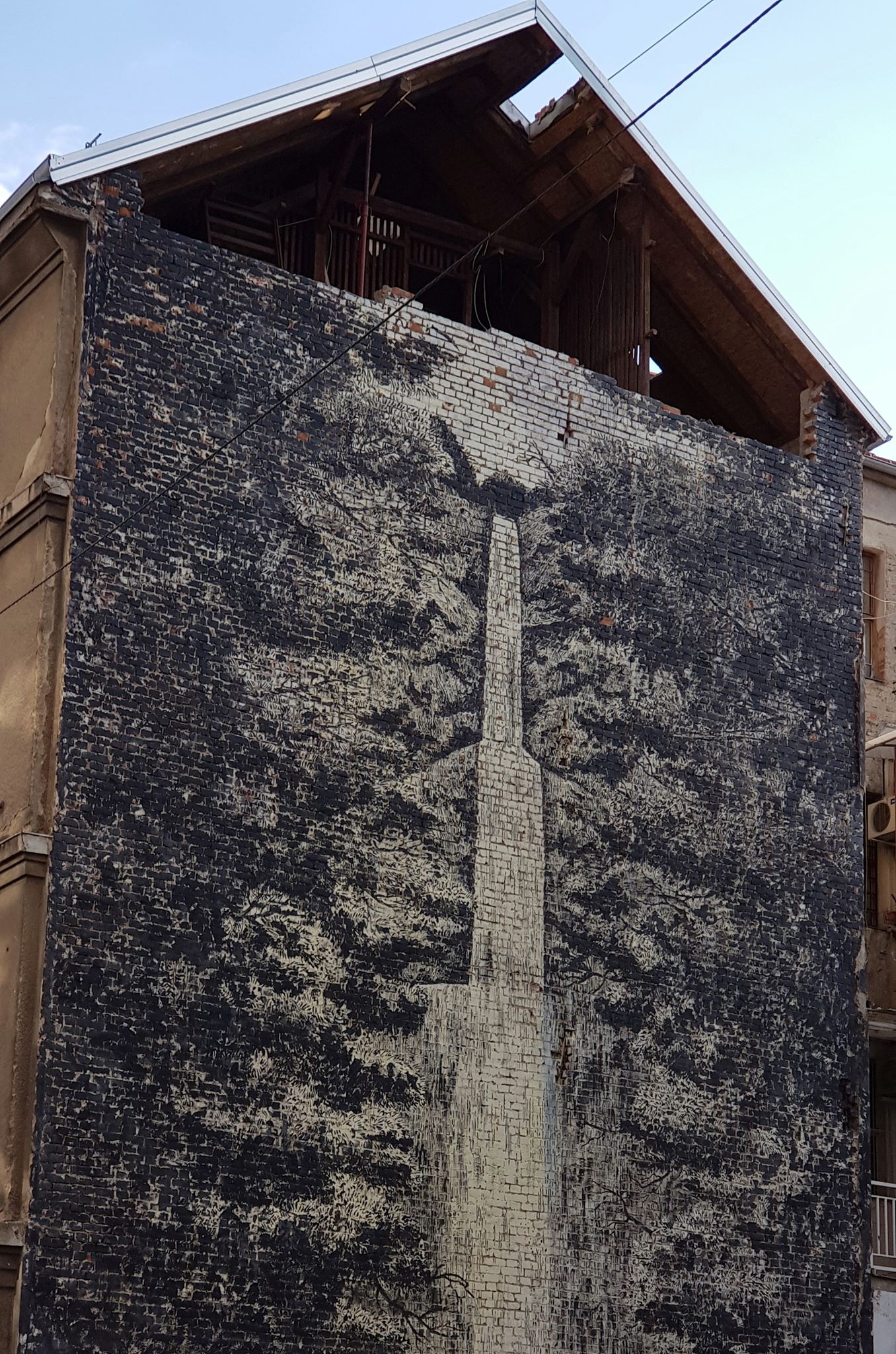
Right now, we can’t help but think for a second of a stronger earthquake that would cause all of us to lose our homes. But we just take a deep breath and try to think of something else. There’s a sense of bitterness and helplessness in the air. Art historians and architects are the only ones who still have the strength to try and influence the urgent renovation law. They keep warning about the fact the law doesn’t care about the city. And that it doesn’t even care about its people (the experts are conveniently being accused of putting pretty facades in front of human destinies).
It’s not comfortable to watch the demolition of a part of your cathedral spire. It’s not nice to spot a red sticker with the word “Unusable” on your own primary school. But to tell you the truth, watching the parts of the city fade is something we’re used to. In recent decades, we’ve lost so many parts of our lives through the neglectful actions of the city authorities. I’m not even going to try to explain, but all of the Zagrebers will understand how a single magnolia tree can be worth fighting for, and the desperate feeling when the fight is lost. At least, the top of the cathedral spire wasn’t taken away from us by someone of flesh and blood.
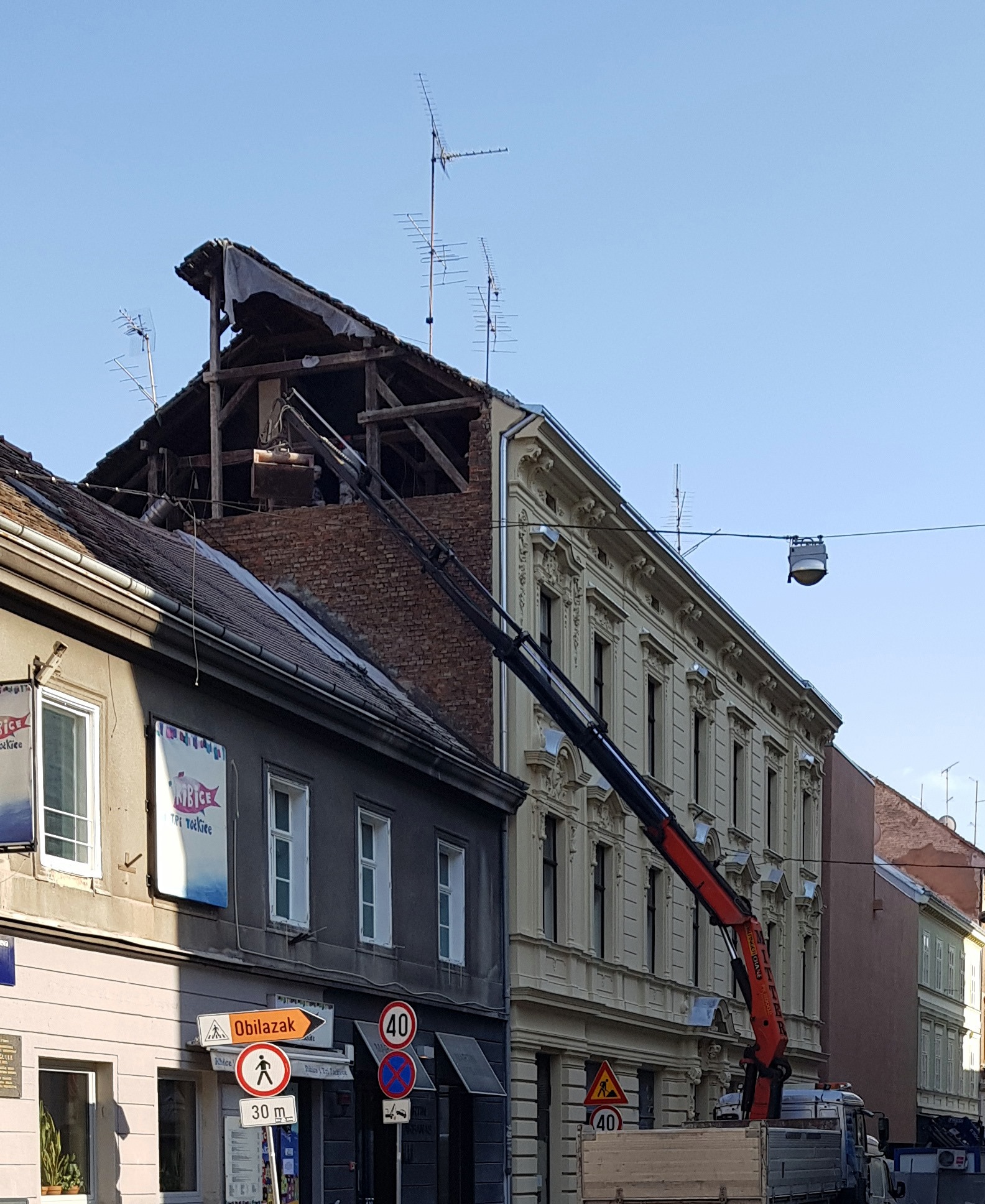
Today, more than a month since the earthquake, that’s the scariest thing. For a moment or two, we feel like we can’t really preserve our city. It’s been slipping through our fingers for a long time now. And the earthquake… it didn’t expose the incompetence of the authorities or anything we didn’t already know. It didn’t destroy the town in its seconds of terror. Just like with the cathedral spire, it just scratched the surface. However, on that 22nd of March, the earthquake took away the safety of their own home for some people, and gave the tools to accelerate the fading of the city to others.
Many of us can’t stop thinking – what is more ethical? Is it the priority to give people a safe place to live in no matter the cost? Or should the real priority be careful renovation and the respect of heritage and the city’s identity? We torment ourselves with these thoughts and feel guilty no matter which side seems logical at a given moment. It’s good to feel a little guilty because we do carry a part of the blame. But, not all of it. It’s not completely true that we’ve been silent all these years. The residents and the experts expressed their opinion on many dubious decisions very clearly on many occasions. However, despite the public opinion and protests, changes have been made in an arrogant autocratic way.
At the same time, none of us was properly educated about the possibility of earthquakes, and the city didn’t educate or encourage its residents to include static reinforcement when renovating historical buildings. Not a single plan for renovation or taking care of people in the case of an earthquake was made, at least as far as we, the common people, are aware of. And by now, we should now. All we have is information where to gather in case of a truly devastating earthquake and what’s the alternate route in case our bridges collapse. Only some people have that information – those who have really tried to read the difficult-to-understand, impossible-to-notice posters placed in some of the town’s institutions. And what do we do after the earthquake? Not a single word about that. Who could even think that a month after the earthquake of moderate magnitude a part of our fellow residents will still be in student dormitories, and others will still not have the slightest idea of how should life look like in the city center in the following months or years? The truth is, we were unprepared. That’s the reason we managed to crash Last Quake over smaller aftershocks.
I will take a part of the blame for the magnolia tree. I will also accept a part of the blame for many other dubious decisions of the town council in recent years. But, even the slightest suggestion that the residents are to blame for a complete lack of competence shown by the city’s authorities for a completely expected event... I will not accept that. More than a month has passed, it’s time for us to stop having the useless feelings of disbelief and helplessness. We do have a right to expect that both the residents will be taken proper care of, and that each and every corner of the city will be respectfully renovated.
For more coverage of the Zagreb earthquakes, follow the dedicated TCN section.
Iva Silla is the owner of tour agency Secret Zagreb.
Croatian Economy: New Growth Model Needs Four Key Features
As Julije Domac/Poslovni Dnevnik writes on the 23rd of April, 2020, could we have ever expected this? The crisis caused by the COVID-19 virus is shaking Croatia and the Croatian economy, as well as that of the whole world. We're currently living in times that would otherwise be really difficult to even begin to imagine.
The coronavirus crisis we're now in is testing absolutely everything that matters most to us and that we simply take for granted. This includes the mere functioning of the Republic of Croatia as a country. Not only has the functioning of the state been called into question, the function of the Croatian health system has, too. A test of our European solidarity of cooperation is also now heating up. However, the crisis of the generation is also the opportunity of the generation. The need and the energy to finally change Croatia for the better, the need to hit the reset button on the country, has never been clearer.
The recovery of the Croatian economy.
In this tremendously difficult situation, we're also facing another crisis - the shock to the Croatian economy and the European economy as a whole is currently more severe than the 2008 crisis. More than ever, we need a strong and coordinated economic policy response, a clear set of priorities and the launching of investments.
The recovery of the Croatian economy will only come from massive investments to protect and create jobs and support all businesses and companies, all Croatian cities and regions, and all sectors suffering economic damage as a result of this suddenly stalled economic activity.
New investments should also stimulate a new Croatian and European economic growth model - that model should be much more resilient, much more protected, more sovereign and more inclusive. All these demands lie in the idea of a green economy. The transition to a climate-neutral economy can quickly secure jobs, growth and improve the way of life for all residents of the Republic of Croatia, the European Union, Europe, and around the world. It would also contribute to building a more resilient society.
New technologies are already here, in 2019, as much as 72 percent of all investments in the energy sector were related to renewable energy. In the last decade, tremendous progress has been made in developing new technologies and creating a totally new value chain. Just ten years ago, zero emission vehicles were just a prototype, today they're everywhere on our roads.
Just a decade ago, wind energy was three times as expensive as it is today, and solar power was as many as seven times more expensive. Ten years ago, we didn't even deal with the energy renovation of buildings because it seemed expensive and entirely unnecessary to us.
The political will for change is clearly being expressed today. Projects such as the European Green Compact and numerous national plans for carbon-free development clearly define the path that Croatia should take - and boldly. Contrary to some expectations, the COVID-19 crisis didn't distract other EU member states from advocating a more green agenda, quite on the contrary.
The recent initiative of 12 EU member states led by Denmark, Germany and France calls for a ''green recovery'' as a key strategy for the times of crisis we're currently living in. The European Commission has also launched a public consultation on its Renewed Sustainable Financing Strategy, part of a 3 trillion euro package for a greener economy by the year 2030.
Make sure to follow our dedicated coronavirus section and our business page for more.
Croatian Athletes, Teams Return to Training Under Special Conditions
April 24, 2020 - Croatian athletes of the first two individual categories and the senior teams competing in the highest rank can start training again from Monday, April 27.
24 Sata writes that Croatian athletes and clubs have finally received the go-ahead from the Croatian Government that their sporting activities can begin again.
Croatian athletes of the first two individual categories and senior teams competing in the highest rank can start training again from April 27, concluded Prime Minister Andrej Plenkovic after the session of the Croatian Government on Thursday.
Thus, on Monday, the top football teams in the country could start preparations for the season to continue. As the first calendar option failed, two more calendar options remain. One is to start the championship on May 30, while the other is to continue the championship on June 13.
Croatian champion Dinamo welcomed the news, though little is known about the club's plan for training. It is only certain that there will be some activities on Monday (April 27) at Maksimir. The club is still awaiting a letter of all measures (or its publication on the official site), so the players and new staff will act in accordance with these provisions.
The situation will involve discussions with doctors and epidemiologists, as Dinamo does not know whether they will train in smaller or larger groups and maybe work individually.
New coach Igor Jovicevic will start his adventure on the Dinamo bench in odd conditions, and the schedule and manner of training will depend on the instructions of the Government, doctors, and epidemiologists. In any case, everything will be much clearer by Monday.
On the other hand, Hajduk has been in good shape for a week already. The first-team players have been individually training at Poljud, each in their own term, with tasks assigned to them by the fitness trainers. As the situation with the virus stabilized, Hajduk was granted permission to train with multiple players in one group. So, as of Friday, Hajduk will train in a group of four players with coach Igor Tudor.
The four-member groups will alternate throughout the day at Poljud, but still with all the measures prescribed by the Civil Protection Headquarters. Players will always train in the same groups. The whole team could train together only once the coronavirus is fully under control.
Rijeka has been training at Rujevica for several days. The training is organized in several groups, followed from the stands by trainer Simon Rozman who returned from Slovenia several days ago and has to quarantine. The club, therefore, provided him and his assistant with accommodation in President Mišković's office.
This news has undoubtedly pleased Croatian athletes, including the Sinkovic brothers and the best Croatian gymnast Tin Srbic. Martin and Valent had been rowing on the ergometer on their balconies for more than five weeks, awaiting permission to train. While the citizens of Zagreb were walking around Jarun in peace, the Civil Protection Headquarters did not allow the Sinkovic brothers to train.
"We'll switch to Jarun now. I can't wait to get in the boat. We haven't rowed for five weeks, so we'll have to get a feel for the pairs," said Martin Sinkovic, and Valent added:
"It feels like I haven't rowed for a year. I’m waiting for Monday to get into a normal training rhythm. A few days ago, we received the news that we would have the European Championship, and now we will be able to prepare."
Gymnast Tin Srbic has been improvising and maintaining form for weeks, but from Monday, he can finally go back to his favorite place - the gym!
"I am glad that the decision was made and that we will be able to train normally. To me, the gym is everything, so I hope there will be new competitions at the end of the year to represent your country," Srbic told RTL.
To read more about sport in Croatia, follow TCN's dedicated page.
Travel Tomorrow: Croatian National Tourist Board Joins World Tourism Organization Campaign
April 24, 2020 - The Croatian National Tourist Board is involved in a campaign launched by the World Tourism Organization (UNWTO) to promote gastronomy as an essential part of tourism and the overall tourist offer.
HRTurizam writes that the gastronomic project is part of the #TravelTomorrow campaign that seeks to highlight the fundamental and enduring value of tourism, including the culinary heritage of UNWTO member countries.
As part of the project, each country will highlight its most famous national dish, which will be promoted through UNWTO's official website through video material, photos and original recipes. The richness and diversity of Croatian gastronomy will be presented through Zagorje strudel, a traditional specialty of Croatian Zagorje.
In Croatia's video campaign, the process of making Zagorje strukli or struklji is presented, whose popularity has spread from the Croatian Zagorje to other parts of Croatia. Today, it is one of the trademarks of Croatian gastronomy.
At a time when the coronavirus pandemic has hit the tourism sector, the UNWTO aims to show how culinary heritage gives people a strong sense of belonging and brings a touch of local flavors to their homes to keep the dream of future travel alive.
Hrvatska Puna okusa - Štrukli from Croatia Full Of Life on Vimeo.
Croatia is also part of WTTC and ETC promotional campaigns
The Croatian National Tourist Board will also join the #TogetherInTravel World Travel and Tourism Council (WTTC), a global tourism authority representing the private sector and destinations in all parts of the world.
The goal of this campaign is to highlight the importance of tourism worldwide by encouraging interaction by sharing promotional material in the form of videos and photos with the common tag #TogetherInTravel. Also, as pointed out by the CNTB, in addition to several European tourist organizations, they are participating in a significant promotional project, being supported by the European Travel Commission (ETC), through the promotion of several types of tourism products such as nature and outdoors, and creative cities, history and cultural heritage.
To read more about travel in Croatia, follow TCN's dedicated page.
Za Križen 2020 kako ga je vidio križonoša iz Vrbnja Matteo Bratanić
22. travanj, 2020 - 500 godina stara procesija Za Križen na Hvaru, koju je zaštitio i UNESCO, jedan je od rijetkih događaja koji su se ovoga mjeseca održali u Hrvatskoj. Pročitajte intervju s križonošom iz Vrbnja, Matteom Bratanićem i zavirite iza kulisa ovog događaja.
1943. godine talijanski fašisti ograničili su procesiju na samo 12 osoba po mjestu, a 1944. ona je održana u izbjegličkom kampu u pustinji Sinai u Egiptu. Procesija Za Križen koja se održava na Hvaru od 1510. godine 2009. je godine uvrštena na popis nematerijalne baštine UNESCO-a sastoji se od šest istovremenih procesija iz Jelse, Pitvi, Vrisnika, Vrbnika, Svirča, Vrbnja i Vrboske koje prate bosonogog križonošu dok kroz noć hoda preko 25 kilometara na hodošašću u molitvi. I dok je većina drugih događanja u Hrvatskoj ovoga mjeseca otkazana, Za Križen je kontroverznom odlukom dopušteno da se održi, iako u ograničenim okolnostima. Dok svake godine stotine ili čak tisuće ljudi sudjeluju u procesijama, Za Križen 2020 je bila ograničena na samo 15 osoba po procesiji.
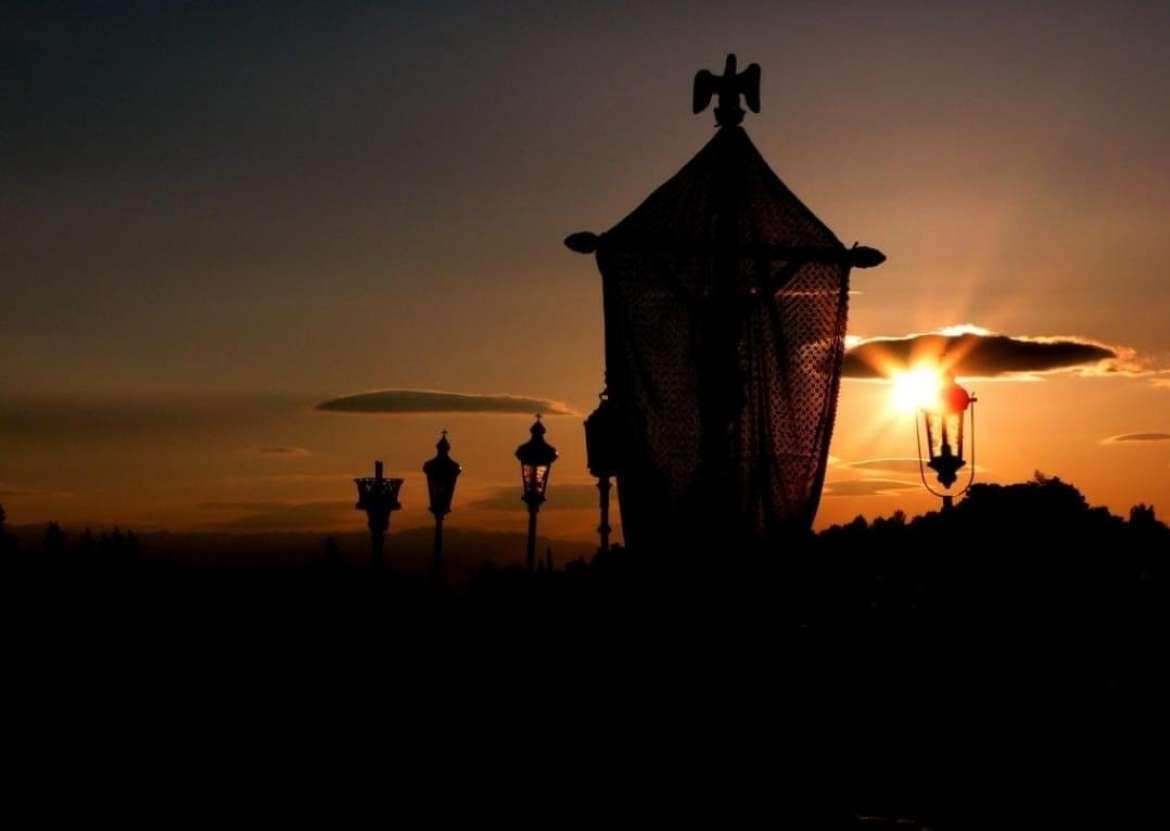
TCN je bio jedan od rijetkih svjedoka procesije Za Križen 2020. Detaljan opis događanja možete pročitati u našem članku an see our detailed account in Jelsa Za Križen, Hrvatska nije Wuhan, i osjećaj kabinske groznice.
Pa, kako je bilo nositi križ tijekom najčudnije godine procesije Za Križen, i kako je to sve izgledalo iza kulisa? Zahvalan sam križonoši iz Vrbnja Matteu Brataniću na ovom fascinantnom i detaljnom izvještaju o procesiji, pripremama za nju i onome što je nakon nje slijedilo, iz perspektive jednoga od šest muškaraca koji su nosili križ.
Za početak nam recite, kada ste se prijavili da budete križonoša za Vrbanj? Prije koliko vremena?
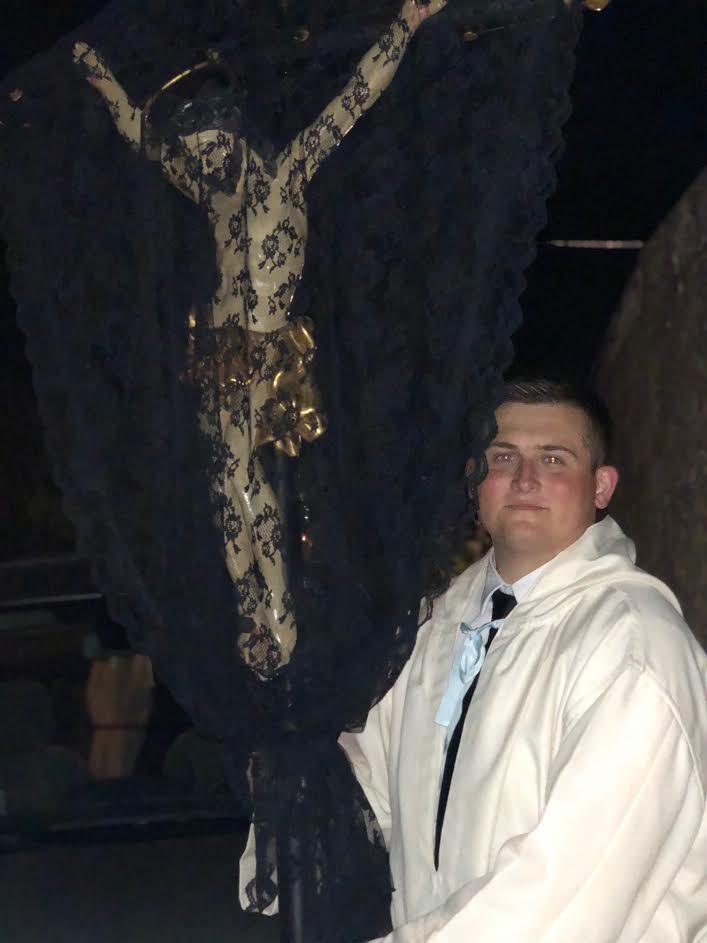
Zapravo, nisam se sam prijavio da budem križonoša. To je učinio moj pokojni djed 2000. godine, kada je moj stric, dr. Andre Bratanić nosio križ. Tada sam imao 14 mjeseci. Nažalost, moj djed koji me prijavio preminuo je u rujnu prošle godine, tako da nije dobio prigodu vidjeti kako sam mu ispunio želju.
Kako bi pripreme za procesiju izgledale normalne godine?
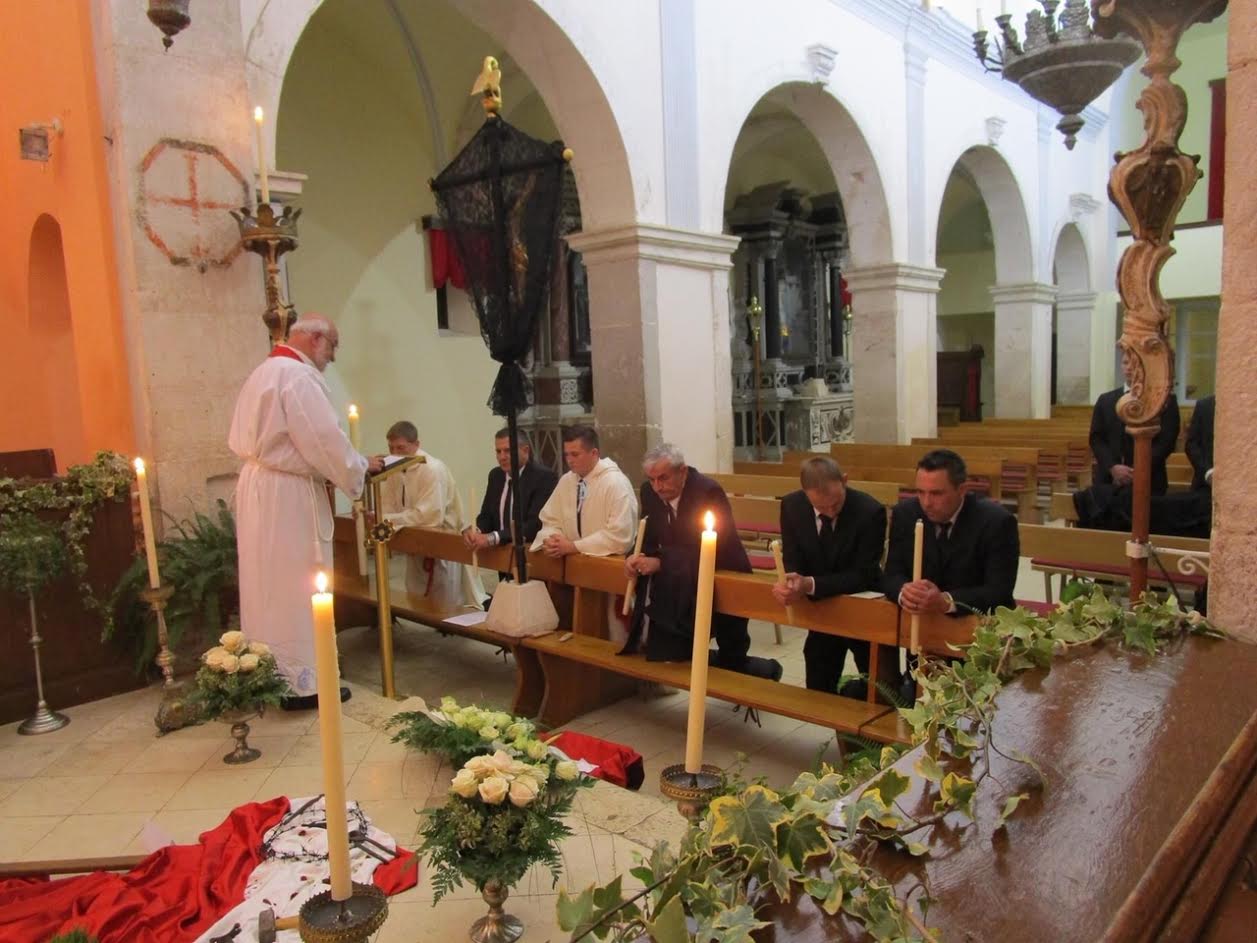
Čak su i ove godine pripreme normalno počele. Ljudi koji su bili uključeni u organizaciju procesije dolazili su u našu kuću na večere, „Kantaduri“ su uvježbavali pjesmu „Gospin Plac“ i zajedno smo vježbali pjesme koje se pjevaju kad se stiže u različita mjesta. Naravno, potrebno je pripremiti se i kroz crkvu, odlaskom na misu svake nedjelje, kroz ispovijed na početku Korizme i pomalo se duhovno pripremati za ono što dolazi.
Kako se mentalno i fizički pripremiti za takvo nešto?
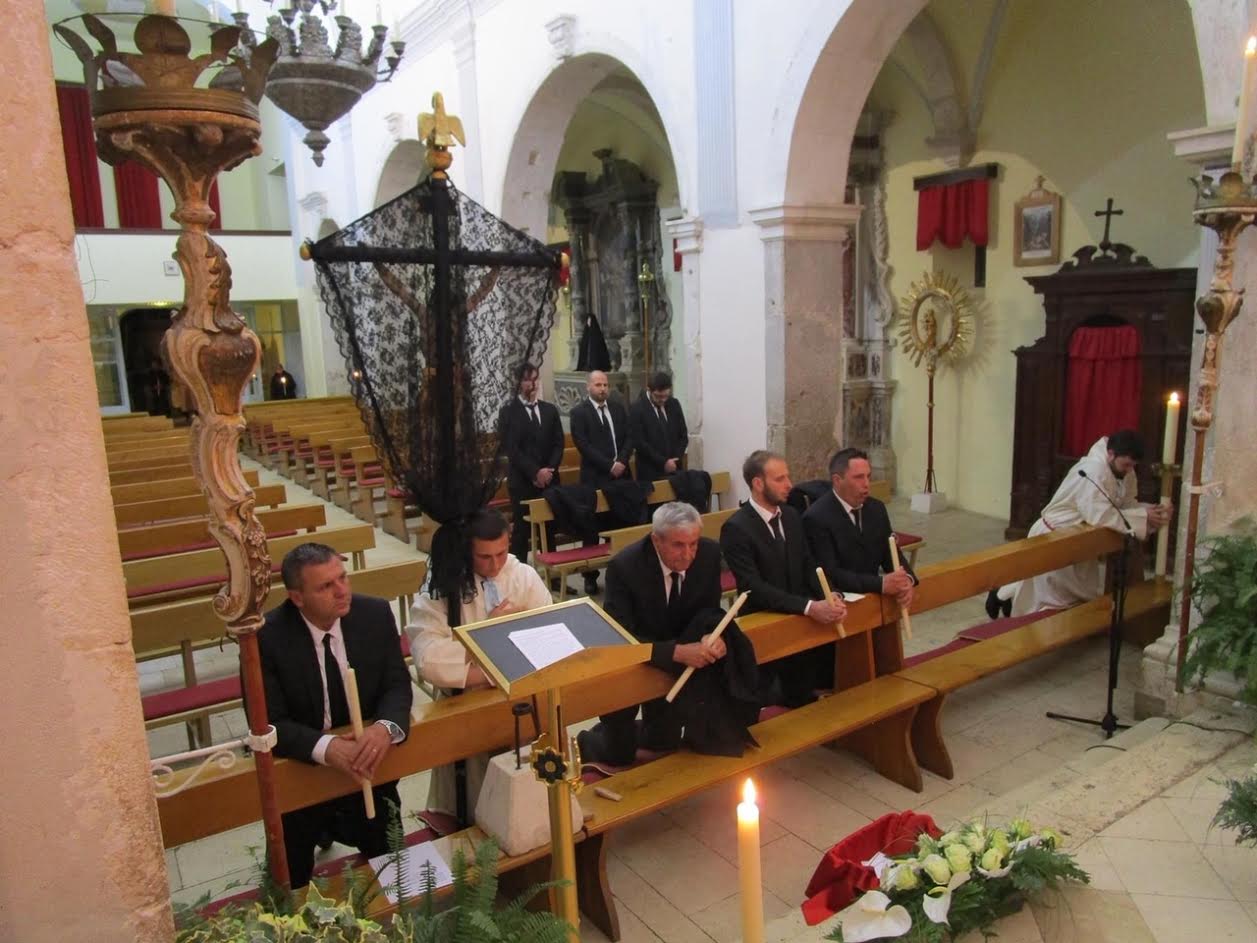
Mentalno, morate si utuviti u glavu da to nije nešto nemoguće. Mnogi su prehodali 25 km noseći križ težak 8 kg i ti ćeš biti jedan od njih. Nema potrebe za panikom. Da budem iskren, kad smo iz Vrbnja krenuli na procesiju, sve o čemu sam mogao misliti bilo je "O Bože, u što sam se uvalio, kako ću ovo izdržati“ itd. Ali svećenik koji je donedavno bio u Vrbnju, don Branimir, rekao je vrlo istinitu stvar s kojom se u potpunosti slažem: „Od Vrbnja do Vrboske: ti nosiš križ. Od Vrboske nadalje križ nosi tebe“. Kad uspijete pronaći ugodan položaj za nošenje, postane stvarno lako. Fizički, moraš biti pripremljen nositi križ težak 8 kg, pa je bitno imati snage u gornjem dijelu tijela. Zbog pandemije nije bilo mnogo toga za raditi, pa bih se zaključao u svoju sobu i radio sklekove i trbušnjake, a uz to sam pomagao ocu na polju, u što je uključeno mnogo dizanja teških predmeta. Uz to sam zaista aktivan. U Kanadi igram nogomet i redovito idem u teretanu, pa nisam bio zabrinut. Izdržljivost je ključ da biste mogli izdržati svih 25 kilometara. Svi znamo da nije cijeli put po ravnome – dio prema Pitvama je najteži jer je uzbrdo cijelim putem. Zahvaljujući igranju nogometa i čestim odlascima na planinarenje i hodanje, bio sam spreman i zaista sam se dobro osjećao. Kada smo se ujutro vratili u Vrbanj, bio sam spreman za odraditi još 25 kilometara.
Ovo nije bila normalna godina. Kada ste shvatili da Za Križen 2020 neće biti kao prethodnih godina, ako se uopće bude održala?
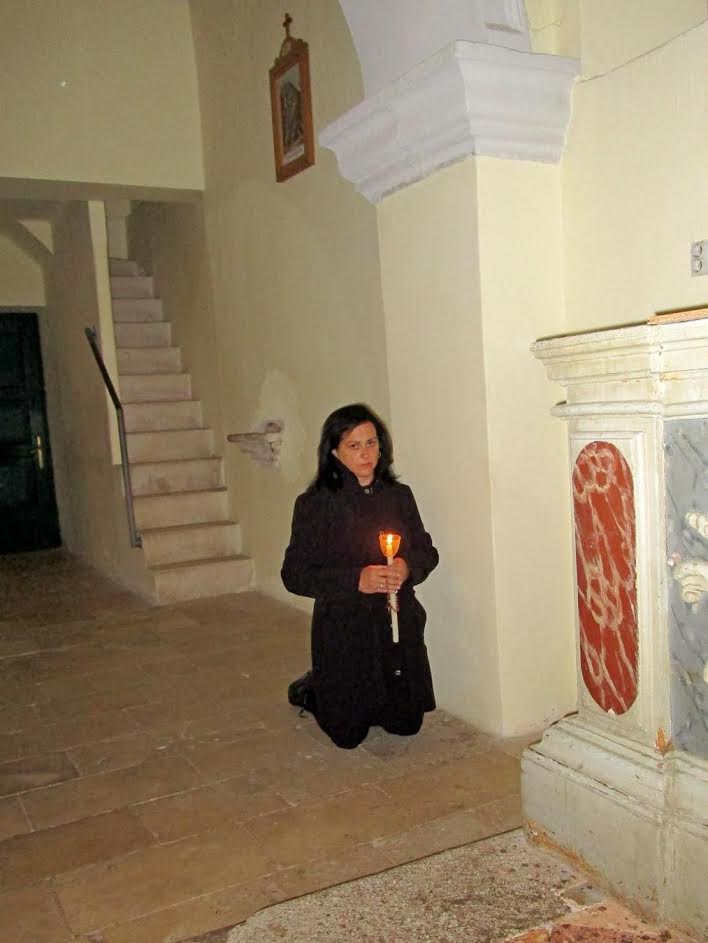
1943., 1944. i 2020. bit će godine kojih će se ljudi ponajviše sjećati. Meni je postalo jasno da će ova godina biti posebna kada je hrvatska Vlada uvela restrikcije (zatvaranje ugostiteljskih objekata, ograničavanje broja kupaca u dućanima, zabrana okupljanja itd.). Otprilike dva tjedna prije procesije dobili smo naredbu od policije da smiju ići samo troje ljudi plus križonoša u procesiji. Tjedan dana nakon toga, broj je povećan na deset ali nakon još nekoliko dana broj je smanjen na pet. Zahvaljujući naporima Antonija Škarpe, gradonačelnika Staroga Grada, Marija Lušića-Bulića, člana crkvenog odbora Vrbnja i Mika Belića Kice, predsjednika crkvenog odbora Jelse, broj je vraćen na deset ljudi. Zahvaljujući naporima glavnog „Stožera“ u Zagrebu, dopušteno nam je da u procesiji bude petnaest ljudi, što je donijelo mnogo olakšanja meni, mojoj obitelji i cijelome Vrbnju.
Ispričajte nam kako ste se osjećali kada je rasprava o ovom pitanju stigla na stol hrvatskog Premijera.
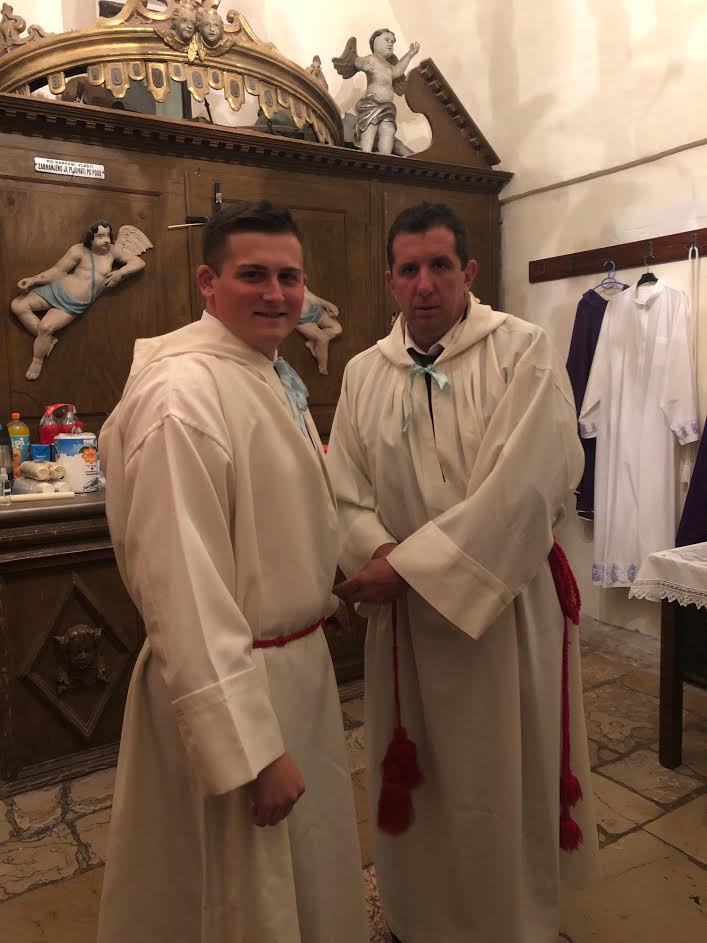
Kako smo znali da je Premijer Plenković s Hvara i da je redoviti posjetitelj ovog događaja, bili smo uvjereni da će se procesija Za Križen održati, ali nam je broj sudionika bio misterija. Bili smo mentalno spremni na originalnih pet članova procesije ali kada je dan prije održavanja stigla vijest da će moći ići petnaest osoba, osjećali smo samo zahvalnost i sreću.
Kako su izgledale rasprave o tome kako nastaviti, koliko je blizu bila odluka da se sve otkaže?
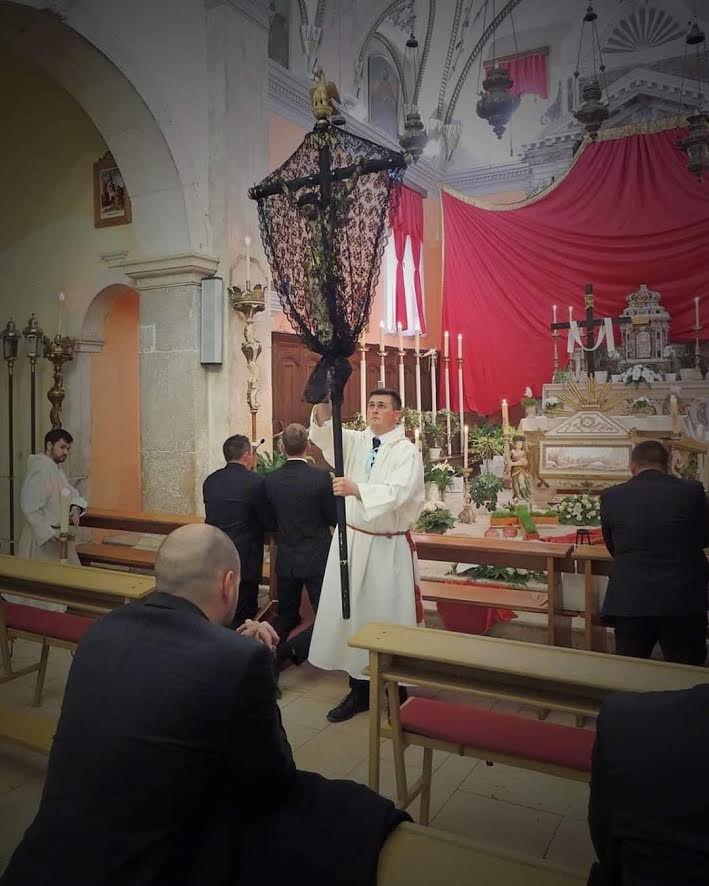
Kao što sam već rekao, bili smo spremni da će se procesija dogoditi uz sudjelovanje po pet osoba. Svima nama glavni fokus je bio da svih šest križeva prođe, tako da se ne prekine petstogodišnja tradicija. Moglo se lako dogoditi da tradicija bude otkazana, ali znam da sam ja osobno bio spreman krenuti sam uz pomoć svog oca, samo da izbjegnemo otkazivanje tradicije. Govorkalo se da bi se procesija mogla odgoditi na rujan, ali nitko na otoku nije bio sklon tome rješenju jer to jednostavno ne bi bilo isto. Slavimo Kristovu smrt i uskrsnuće u ovo doba godine s razlogom… Procesija ne bi imala nikakvog smisla kada bi se održavala u bilo koje drugo doba godine.
Drugdje u Hrvatskoj bilo je mnogo ljutnje što je dozvoljeno da se održi procesija Za Križen. Što kažete na to?
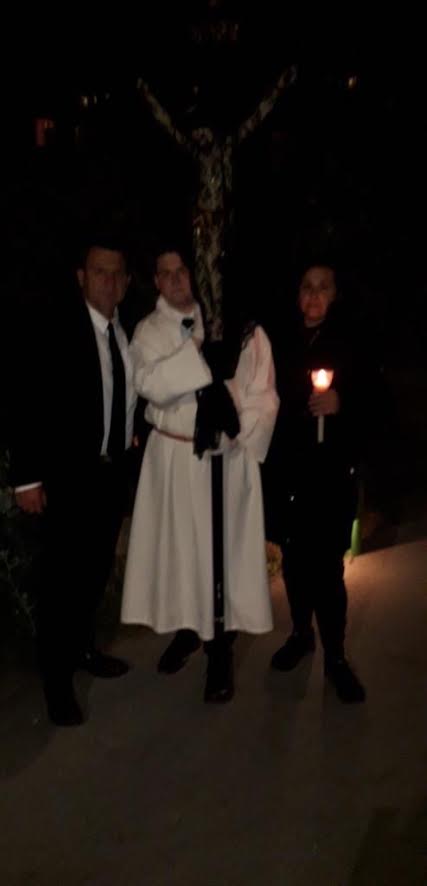
Uz Hrvatsku i cijeli svijet usred ove pandemije, razumijem zašto su ljudi koji ne žive na Hvaru bili uzrujani. Stanovnici Hvara izolirani su 365 dana u godini i ovo je među rijetkim događajima kojima se stvarno vesele svake godine. Uz pažljivu pripremu procesije od strane „Stožera“ i policiju kao i sudionike koji poštuju sva pravila i odredbe koje su im dane. Prije procesije na Hvaru nisu zabilježeni slučajevi infekcije, tako da nije bilo posebne opasnosti. Srećom, nakon procesije možemo potvrditi da na Hvaru još uvijek nema slučajeva zaraze virusom, stoga velika zahvala svima koji su sudjelovali u procesiji na tome što su slijedili pravila!
Ljudi izvan Hvara ne dijele našu strast i osjećaje prema tradiciji staroj 500 godina, koje osjećaju stanovnici otoka. Posve razumijemo zabrinutost i prigovore koje smo čuli i mnogi od njih su bili u redu, ali postoje neke granice i linije koje se ne bi trebalo proći. Kada su ljudi počeli pokazivati manjak poštovanja prema crkvi, procesiji i na kraju prema samome Bogu, posebno kada ne razumiju koliko ova procesija znači stanovnicima Hvara, to je „prelaženje granice“. Mi koji imamo snažne pozitivne osjećaje prema crkvi, procesiji i Bogu bili smo iznervirani i osjećali smo manjak poštovanja zbog nepotrebnih komentara koji su išli protiv naših vjerovanja. Meni se čini da bi se tu trebalo primijeniti nešto što smo naučili u osnovnoj školi: „ako nemaš nešto pametno ili lijepo za reći, onda radije šuti.“
Kako je izgledala procesija kada je konačno krenula?
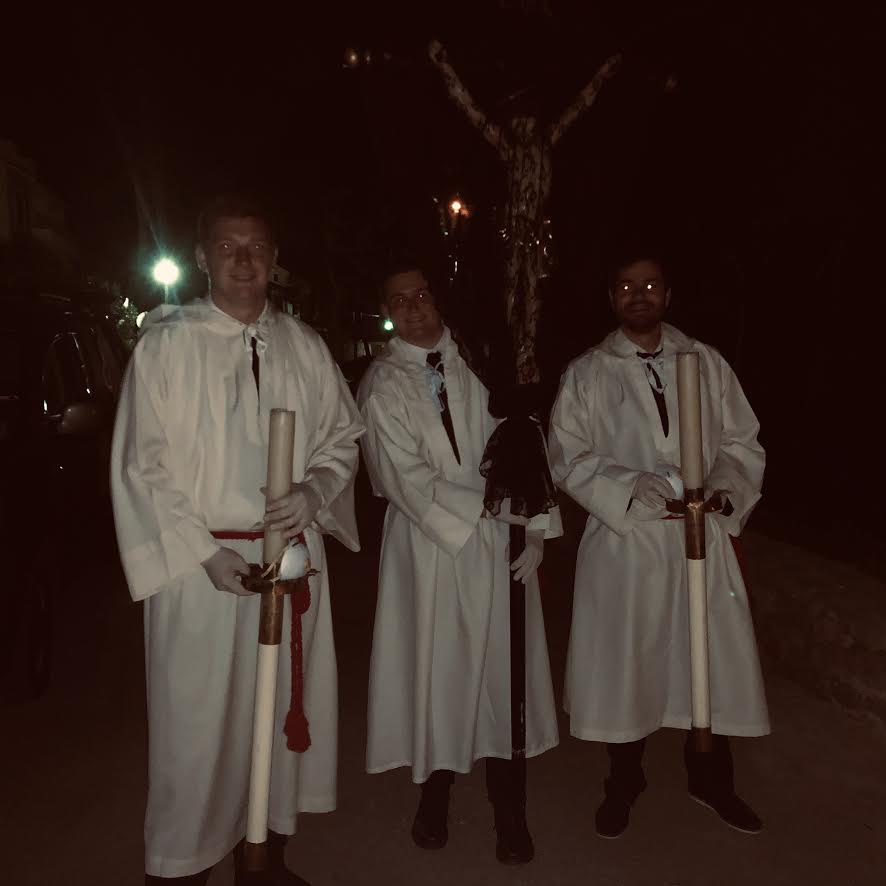
Cijeli Hvar bio je uzbuđen i osjećao je zahvalnost. Ja sam bio posebno sretan jer sam na tu prigodu čekao dvadeset godina i konačno sam mogao slijediti stope svoga oca, djeda, strica i pradjeda u nošenju križa, ali sam bio još sretniji jer sam bio jedan od križonoša ove godine, koji su dobili priliku nastaviti ovu svetu tradiciju umjesto da ona bude prekinuta. Nitko nije očekivao da će ova godina biti „posebna“, ali ni ja ni moja obitelj ne možemo biti sretniji kako je na kraju sve ispalo. Cijela ovogodišnja Korizma bila je ispunjena molitvom kroz mise prenošene na televiziji koje su doprinosile duhovnoj pripremi. Sama procesija bila je malena, ali prekrasna i prepuna molitve. U procesiji smo imali dvojicu koji su predvodili molitvu cijelu noć. Uspjeli smo uključiti i dvojicu vrlo talentiranih pjevača iz Vrbnja koji su pomogli da naša pjesma kroz noć zvuči predivno. U Pitvama smo čuli komentar kako su impresionirani našim pjevanjem, jer je u crkvi bilo samo 10 ljudi koji su pjevali, a zvučalo je kao da ih je stotinu.
Vaša obitelj i stanovnici Vrbnja učinili su krasnu gestu za žrtve potresa u Zagrebu. Ispričajte nam više o akciji 'Varbonj za Zagreb'.
Usred priprema za procesiju Za Križen, prije otprilike mjesec dana, Zagreb je pogodio potres koji je oštetio mnoge domove i crkve. Istovremeno, nas su udarali neugodni komentari ljudi koji su bili protiv održavanja procesije. Moj otac i ja odlučili smo da ćemo pokloniti sva novčana sredstva koja smo primili kao poklon, u korist večere na Veliki Četvrtak i ručak (Obid od Križa) na Uskršnji ponedjeljak. Ako bi nas netko darivao poklonom koji nije novčani, izračunali bismo njegovu vrijednost i donirali bismo taj iznos iz našeg džepa za Zagreb.
Predložili smo ovu ideju don Mili Plenkoviću, svećeniku iz Vrbnja i crkvenom odboru, koji su to rado prihvatili i kampanju nazvali "Varbonj za Zagreb - Za Križen 2020". Također su odlučili da će i sav novac prikupljen tijekom Svetog Tjedna u crkvi, takozvanu „lemozinu“, također darovati u taj fond. Kada je sve završeno, tjedan dana nakon Uskrsa, s ponosom možemo reći da smo prikupili 100.000 kuna. 50.000 kuna bit će uplaćeno u fond koji je Vlada Republike Hrvatske otvorila za pomoć Zagrebu. Preostalih 50.000 uplatit ćemo na račun "Kuće sv. Terezije od Malog Isusa za nezbrinutu djecu" u Zagrebu. Radi se o instituciji koju vode Karmelićanke presvetog srca Isusova. Brinu se za djecu bez prikladne roditeljske skrbi. Potres je znatno oštetio njihovu zgradu u centru Zagreba, pa su je morali napustiti dok se ne obnovi.
I kako se sad osjećate, kada je proteklo dva tjedna od procesije? Sigurno je to za vas bilo posebno emocionalno vrijeme.
(Fascinantan prilog Hvar TV-a s križonošom iz Pitvi 2012)
Ahoy! Croatia's Nautical Tourism Biz Seeks Gov. Help for Coronavirus Effect
April 23, 2020 — Days spent in isolation. Socially-distancing through limited, lazy movement. Plenty of staring at the same handful of faces. A mere wave from a safe distance serving as friendly interaction. It sounds a lot like a holiday at sea.
At least that’s what Croatia’s nautical tourism industry hopes as it plots a course towards a “new normal” in the coronavirus era. Several reports show the marina and charter sector of the economy ready for a little shove via government incentives to help it set sail, and a little luck to help it pass stormy seas.
Tourism Minister Gari Cappelli and other officials suggest any restart of the summer season will prioritize activities light on interaction, predisposed to social-distancing, and big on wide-open spaces. Campsites and vacation homes first, with charters and nautical offerings near the top of the list.
Plans are already in the works. Prime Minister Andrej Plenković’s government reportedly will introduce measures targeting catering and tourism: establishing free movement within Croatia; reaching deals with neighbors whose citizens often who drive to the Adriatic coast (provided the epidemic is under control in their countries); then opening restaurants and cafes with terraces; reintroducing camps and private apartments and then various shops and crafts.
The Croatian National Tourist Board Council concluded that, regardless of the current situation, it’ll prepare advertising campaigns for both foreign and local markets. Everything will restart the moment epidemiologists give the green light, it said.
A plan for cash and bureaucratic redefinition
Members of the marine and charter industry advocate several measures which they argue could help nautical tourism survive the pandemic while setting the foundations for long-term growth. First, they want exemption from some portion of concession fees for this year and next, freeing funds for what promises to be a dismal season.
The government will discuss a new set of measures targeting concession prices.
Croatia’s charter fleet of 4,500 vessels is the largest in the world, taking up 26 percent of all marina space in the country.
“The whole fleet is now useless,” Sean Lisjak, president of the Croatian Chamber of Commerce’s Marine Association, reportedly said. “We are justifiably waiting to receive direct incentives from the government and ministries.”
Advocates’ second proposal would let marinas take part in subsidized minimum wages for workers. The industry’s inherent seasonality means it cannot show a decline in revenue, a requirement for such assistance. Most of the staff of about two thousand who work in the marina system are now sitting at home.
The final suggestion would classify marinas as a branch of tourism, ditching the current designation of sports and recreation. Advocates point to a growing trend called “boat & breakfast,” with visitors using boats in place of luxury furnished cottages by the sea, as evidence of marinas’ disassociation from sports.
In the pantheon of Croatian bureaucratic gibberish, the distinction between tourism and sports matters, according to Lisjak. Mainly, one has a dedicated ministry, and the other doesn’t. It leaves the charter and marinas industries homeless, floating between the Ministry of Tourism and Ministry of the Sea and the Ministry of Finance.
Swapping designations would also lower marinas Value Added Tax levies and clear up some administrative headaches.
An Epidemic of Nixed Reservations and Rock-Bottom Prices
The coronavirus pandemic caused cancelations and requests for refunds, Paško Klisović, president of the Association of Providers of Accommodation on Board Vessels, reportedly said. Others are re-scheduling their trips, moving May and June outings to August and September, getting peak summer appointments at off-season prices. Sometimes, it means a 50 percent discount from the usual rate, according to Klisović.
Rock-bottom pricing will dig into revenues, while disinfection protocols may add to costs. The government hasn’t yet added new sanitary regulations, but it may, according to the president of the Association of Croatian Skippers and Yacht Crew Members Vicko Ozretić. Charter companies and skippers can use squeaky-clean boats in their marketing materials, he said. But it’ll also add costs.
Marinas will reopen and function within days of a go-ahead, according to Kristijan Pavić, CEO of ACI, a chain of 22 marinas, the largest in Croatia.
“ACI's marinas are not working, but are not actually closed,” he reportedly said. “It may be a better term to say that they are ’preserved.’”
The chain’s locations are quiet, save for security. The lack of receptionists means boat owners cannot board their vessels, for now. But they can come and view them.
“We are ready to activate the marinas at full capacity,” Pavić added. “A good deal of the work has already been done in the preparation phase of the season. We only need a few days to prepare the marinas for operation in special conditions, in accordance with all the preventive and health measures prescribed.”
Croatia’s oldest Marina, Punat, has pulled back operations but is ready to restart. Workers, mechanics, and electricians still mind the vessels while following all the required procedures, according to Director Renata Marević.
“Despite everything, Marina Punat works,” she said. “As expected, after the measures were announced, we had intense communication with our boat owners. Of course, the most common question is when they will be able to come again and enjoy the boat, navigation, and sea.”
Marević said the government can only do so much, as neighboring countries also have to control the pandemic enough to open their borders. The marina’s prospects for a salvageable season rest with the epidemiological fates of others. Most of Punat’s guests come from Germany, Austria, Slovenia, and Italy, and until their situations stabilize, none of their citizens will arrive.
She added she hopes the government recognizes the nautical industry as a tourist activity and free up much-needed help.
“Because help will surely be needed,” she said. “The losses will only start to add up.”
Stay at home may not apply
Many nations now encourage citizens to enjoy local vacations within their own countries. The “vacation here, don’t leave” incentives will bite into Croatia’s tourism take this year, as otherwise-generous guests keep their Euros close to home.
The marinas think boaters are a special tourist. Austrians, Germans, Slovenes, and others have been keeping their private vessels docked in Croatian for years. The temptation to widen the definition of “stay at home” to the Adriatic sea may be too strong to resist.
Or at least Croatia’s marinas hope so. Otherwise, they might sink.
How I started Secret Zagreb: Inspirations and Opportunities
April 23, 2020 - TCN is delighted to welcome the legendary Iva Silla from Secret Zagreb to the team. Iva starts with a lovely account on how she started the iconic and innovative agency, and where she is with plans at the moment. Welcome, Number 149!
It is simply impossible to take Secret Zagreb out of the context of everything that’s going on around us. Just a few weeks ago, this article would probably have a very different note, light and inspiring. Even now, in the midst of the coronavirus craze, I am still irritatingly positive, and I still believe that Croatia needs even more creative products for our future guests. However, I also think that people should be more careful between the dream phase and the creation phase. I’ll admit it, when the revenue dropped to zero and the lock-downs started, for a blink of a second, even I thought of shutting it all down. For a blink of a second. But that blink passed and I’m back working on the new Secret Zagreb for the times after coronavirus. I will answer the title question, but I also wish to acknowledge that this story might have been a good example seven years ago. Today, just like everybody else in the tourism sector, I’m starting Secret Zagreb over again. Despite my previous experience, I simply can’t tell for sure whether it is going to succeed again. Hopefully, I was right all this time, and the key steps to success, no matter the circumstances, are as follow: dream – wake up – start working – dream some more. I’m back to this old recipe.
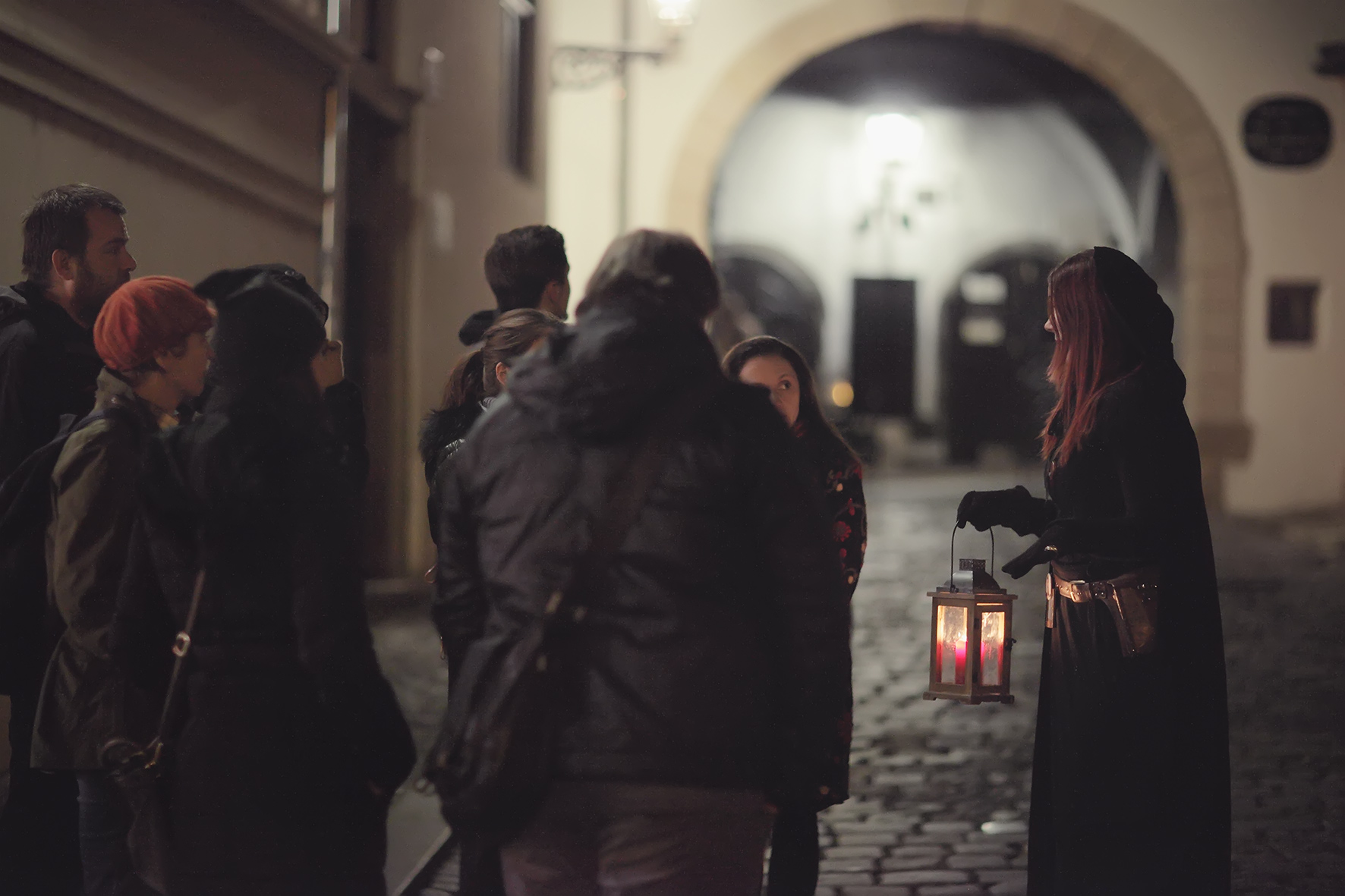
Just like all the birthday girls and boys these days, Secret Zagreb spent its birthday in isolation. I officially launched the city tours company in April 2013. Unofficially, it existed some years prior to that, in all of the books, sketches, maps, post-its all over my house. I made a sketch of a first ghost tour some 15 years ago but I truly accepted it as a project in 2010, when I started the Secret Zagreb blog. Very early on, thanks to my blog, I was recognised as one of the “New Faces of Zagreb” in the article of the same in easyJet’s inflight magazine. That felt like a very big success and it still does. In that article, Secret Zagreb found itself in the distinguished company of Broken Relationships Museum, InMusic Festival and Esplanade Hotel. This proved to me that it wasn’t impossible to reach an audience and that Zagreb was on the rise as a tourist destination.
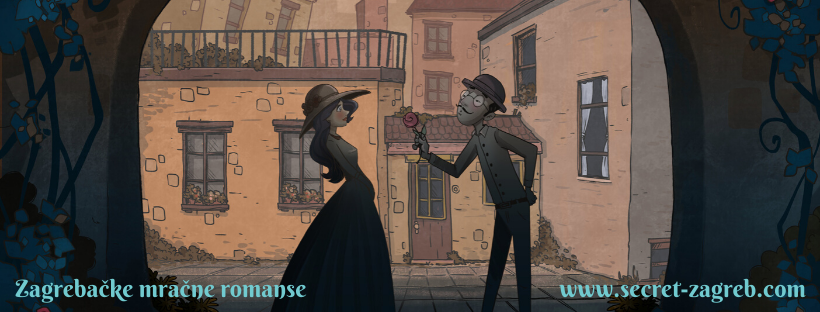
In 2013, I kicked off with two themed tours: Zagreb Ghost Tour (now Ghosts and Dragons Tour) and Sleeping Dragon. As you can imagine, I love myths, legends, mystery and dark tales so those two tours were a logical start. But when it comes to Zagreb, there’s plenty of other things to love. Little by little, I started developing all of my interests and all of the parts of Zagreb that enchant me, into tours. By now, there’s a tour about tragic love stories, steampunk-inspired Zagrebarium, Novi Zagreb tour, Zagreb Christmas Carol, and more. The creation of each and every tour has a lifespan of its own with two most important moments. One of them is when I discover something new that amazes me about my city and makes me feel like I want to share it. The other one is when I suddenly get the feeling a tour is indeed a complete product. It usually happens when it’s already bookable, but a special moment needs to appear out of nowhere to show me that I’m really on the right track.

For example, at the end of 2018, I started the Badass Women of Zagreb tour. It delights me to see that this tour attracts people from all over the globe. However, I didn’t have big expectations - I simply wanted to celebrate the female side of history through what I do well. When I felt the tour was ready, I published it on the Secret Zagreb website. I didn’t build the tour around spectacular stories and unprecedented cases. I simply wanted to show the invisibility of herstory in the streets of this city or any city, and at the same time, the number of amazing women right here in this small country. I wanted to make people think for a second, connect around similar thoughts and memories, identify with some of the heroines. I wanted the visitors to think about their home town and their local badass women. There’s no costume, even though that would be more touristically attractive. Since the whole theme is about special women being true to themselves, there was no point in dressing up another woman as one of them. It’s not designed to be superattractive. Instead, it was meant to be honest and thought-provoking.
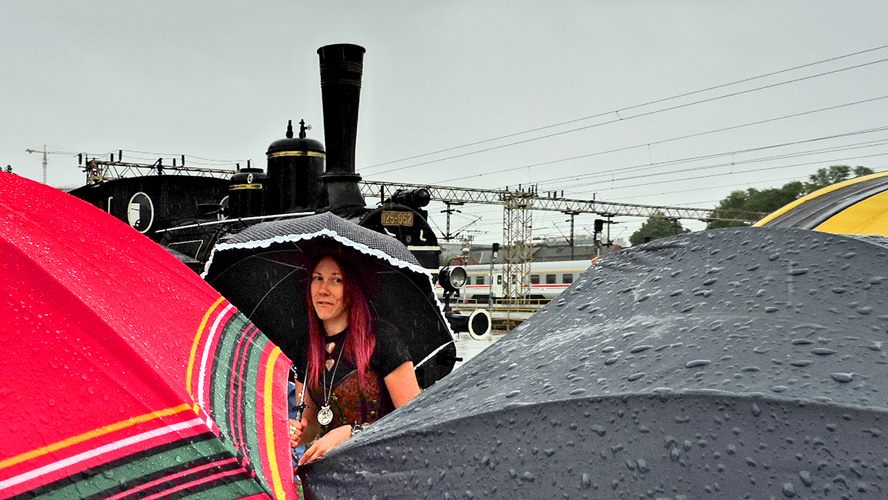
People started calling in and arranging private Badass Women of Zagreb tours. It was already active when this special moment happened back in 2018. I talked about Diana Budisavljević, a woman who organised an incredible action to save thousands of children in WWII. She was still a rather unknown personality back in 2018. This injustice was corrected in the meantime, when a powerful movie about her “The Diary of Diana B.” came out. As we talked about her on the tour, a lady approached us and just stood there in awe. When I finished the story, she told us: “I personally knew Diana and every single word you said is more than true. I’ve lived here in Zagreb my whole life, but I have never heard anyone speaking of her. Thank you.”
Our whole group went teary-eyed. That was the exact moment that showed me that meaningful tours should be on the market and as available as can be. I took this as a sign to set the public dates so it could be easily accessible for travelers. And it worked. People started joining and enjoying the stories about incredible Croatian women. It’s not the bestselling tour with dozens of people, but a handful always gathers, and we have a great time together. For me, creating a tour with a strong message, such as the Badass Women, is slightly more fulfilling than creating an entertaining tour. I distinctively remember each and every guest and feel like we’ve shared special moments together.
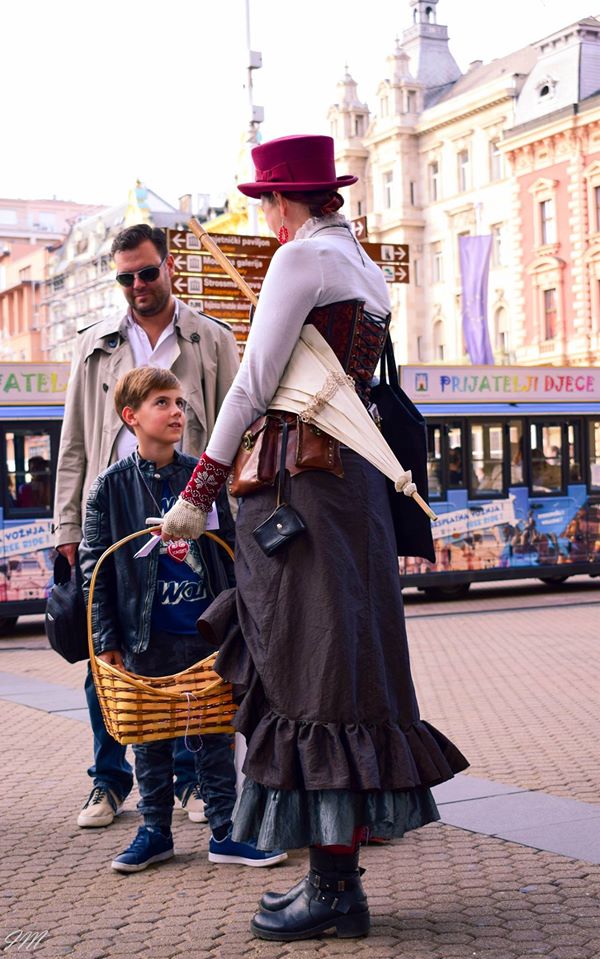
Behind all of my tours lies the same drive – to show there’s something worth discovering in Zagreb. But let’s not be pathetic, I also love pure fun and games. That’s where Secret Zagreb Quests come into play. Wacky tours with riddles and challenges for visitors are a great choice for families or teams. Gamified activities make for another growing sector, especially in the city break destinations, and I’ve been offering them in Zagreb for 5 years now.
Inspiration for new tours lies where I least expect it and I feel it’s important not to let go. If I feel something would make for a good tour, I have to make time and work on it. As you can see, Secret Zagreb is a set of tours and activities that keeps growing and changing. It brought another unexpected benefit to my life. Ever since I started Secret Zagreb, I was blessed with so many cool collaborations that helped me discover a whole new world. Worlds of artists, creative entrepreneurs, enthusiasts that can bring any idea to life.
That was the short story of Secret Zagreb so far. I’m sure you’re going through this article waiting for another inevitable question to be answered: What’s next?
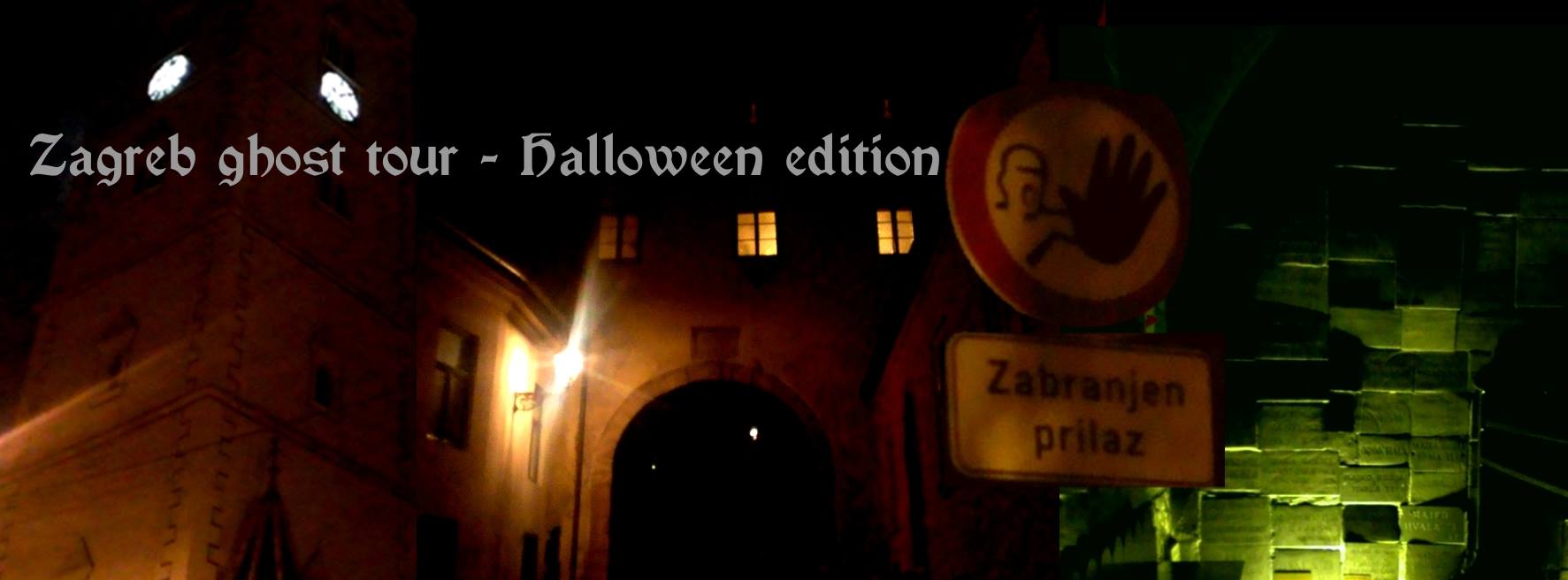
But you already know my answer: I just don’t know. By now, most of us in the tours and activities sector decided to stop trying to predict the future after coronavirus. When it comes to Secret Zagreb, I decided to focus on those predictions that work best for me and plan ahead according to that. I choose to believe that tourists will slowly start coming back. That micro businesses have the best chance to “hibernate” and survive. We still can’t predict the way travellers will behave once they start travelling again. I have to admit that I worry whether they might decide to limit the time spent with tour guides or any locals that are unnecessary. Only time will tell. As much as I hope that’s not going to happen in the long term, I’m currently developing an app that will enable a self-guided exploration of Secret Zagreb.
In Zagreb, we’re not just facing future consequences of coronavirus, but also of the recent earthquake that will definitely affect Secret Zagreb and other themed tours. Obviously, it will be harder and sometimes even insensitive to stick with the topic of a certain tour when there will be so many questions about the earthquake. I’m already redefining all of my tours and activities, because at the moment, only a few of them can stay as they were in terms of route and content. All of the Secret Zagreb tours will still have to make sense after the disaster. I had to completely erase three of my tours for safety reasons and prolonged construction works, including the Mirogoj – Whispers of Eternity cemetery tour. I’m rethinking the Sleeping Dragon tour and quest. It used to be fun and informative, even educational in terms of possible earthquakes. However, at the moment, it could be insensitive to build a product around the earthquake-related legends. I’m sure there will be new products at the market with the recent earthquake in mind. I’m also sure that our wounded cathedral will be the top attraction until they cover it up with scaffolding. However, I’m not so sure I can personally build stories around such a recent tragedy without guilt feelings. Overall, for this year, it will be very hard to promise a certain itinerary in the city center with the expected amount of renovations.
I’d like to share a few thoughts with anyone who is thinking about visiting Croatia: now that I mentioned the earthquake, don’t let this stop you from coming to Zagreb. Before the coronavirus and the earthquake, that is - just a few weeks ago, my city was an example of the diversity of cultural tourism offer and it was an inspiring example for other destinations.
Most of us, who are involved in creative tourism, are driven by a higher goal, such as the desire to show a lesser-known part of their destination or preserve some rare customs. This is why you will always find us collaborate with each other on various projects, and the more we work together, the more productive and creative each of us gets. As long as our visions and motives align. So many people in Zagreb found new opportunities in the rise of tourist numbers, and so many of us were interconnected through many joint projects. When I look back I can’t believe how much genius content do small businesses create. There’s a huge creative force, and I don’t know what are they all doing right now with this extra time. But I do know that, when we all show up back on the streets, we’re going to be better than ever. Zagreb has been through a lot, but it’s going to be more worth visiting it than ever.
And something to share with anyone who wanted to get involved in creative tourism: I honestly believe a deep change in travel is coming. I hope there will be more people who will choose slow travel over bucket lists. It sounds utopian, but if it happens, it’s worth developing new innovative products. If there’s even the slightest possibility that there will be more people who will prolong their stay in offbeat destinations, we should give them reasons to do that. Now is the time to redefine our offer. When tourists come back, let’s give them a chance to discover the true hearts of our hometowns.
Follow Iva's journey and the post-corona Secret Zagreb on the official website.
For the latest news from Zagreb, follow the dedicated TCN section.
Milanović Endorses Proposals for Helping Journalists and Media
ZAGREB, April 23, 2020) - Croatian President Zoran Milanović on Thursday met with Croatian Journalists' Association (HND) president Hrvoje Zovko and the leader of the Trade Union of Croatian Journalists, Maja Sever, who informed him of their proposals for helping media outlets affected by the coronavirus crisis.
"President Milanovic supported the efforts of the HND and the SNH to help journalists and the media. He believes that it is important to protect and promote the autonomy of the media, especially in crisis situations," the Office of the President emphasised.
The HND and the SNH propose that the government adopt special measures for journalists and the media as they have not been covered by existing measures.
As key measures, they point to the establishment of an emergency fund to help journalists from non-profit and local media outlets, as well as freelance journalists, photo journalists, cameramen and other media workers. The fund would be managed by the Agency for Electronic Media.
They propose that media employees be protected by making state aid to publishers conditional on their not laying off employees or cutting their wages.
They also propose that the state give financial help to freelancers and that local media outlets too be eligible for government benefits.
More news about journalism can be found in the Politics section.
Reading in Croatia up 7%, Fiction Remains Most Read
ZAGREB, April 23, 2020 - In 2020 reading in Croatia increased to 49% from 42% in 2019, women and people with university degrees read more often than others, and fiction is their number one choice, shows a survey on reading and book purchasing habits, published on Thursday on the occasion of the Book Night 2020.
The survey was conducted in March 2020 on a representative sample of 1,000 respondents by the Kvaka Agency for Creative Analysis.
In a press release published on the occasion of the 9th Book Night, Tamara Kraus of the Kvaka agency said that the significant shift in book reading was a result of the enthusiasm of organisations and individuals promoting book reading and buying.
"The 49% of readers refers to the percentage of persons aged 16 and up who have read at least one book over the past year, except the required school reading," Kraus pointed out.
Among readers, the largest number read two books in a year. The following groups read books more often than others: women (55%), people in the 26 - 35 age group (60%), and people with university degrees (78%). Books they read are most often borrowed in libraries (44%) or bought (38%).
As for the type of books being read, fiction is still in the first place (65%), followed by non-fiction and technical books (27% each), and reference books (22%).
Books are still most often bought in bookstores (47%), followed by news-stands (18%), and online shops (15%).
Although it was predicted a few years ago that e-books would replace printed books, the percentage of those who read, and especially those who buy e-books, has remained stable at 2%. E-books are read by 9% of Croatians. Daily newspapers are the most in-demand online content, read by 55% of Croatians, while a third of the Croatian population does not even occasionally read content on the Internet.
More news about books can be found in the Lifestyle section.

